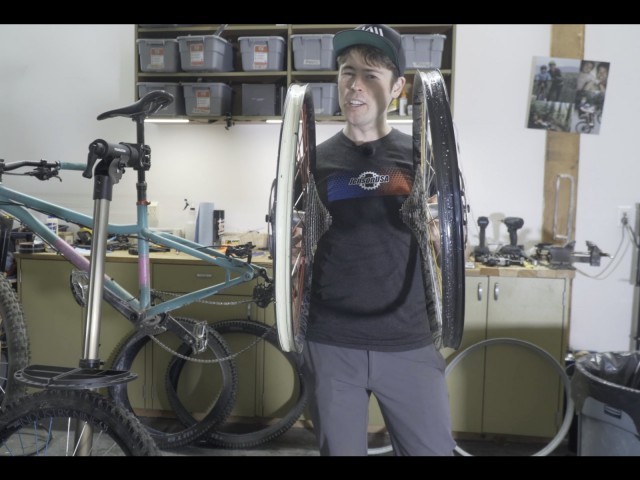Kali Protectives – Carbon Shell Prototype Shiva
Kali Protectives showed us a prototype version of the Shiva, their new carbon fiber shelled full face helmet. Brad Waldron, Kali’s founder, took us through some of the Shiva’s highlights and explained their reasoning behind seeking out DOT certification.
Kali Shiva Details
• Full carbon shell
• Composite Fusion Plus construction
• DOT certified
• Weight (anticipated) 1000 grams
• Available mid-June 2013
• Price: TBD

The new lid is looking stealthy in its prototype guise…
Helmet Design
A look at the unique foam used in the Shiva.
The Shiva’s was designed with the intention of dissipating the impact energy generated during a crash as fast and as efficiently as possible. To accomplish this, the helmet uses Kali’s Composite Fusion Plus technology, where foam is shaped into small pyramids in order to help spread the impact to a greater area, lessening the forces that reach the head. The shell of a helmet with Composite Fusion Plus is bonded tightly to the foam below, without the gap that is present in traditional full face helmet construction. The tight bond of the shell to the foam lets Kali use a thinner shell, which helps quickly transfer impacts to the portion of the helmet that actually absorbs the shock, the foam. The shell of the Shiva is constructed of carbon fiber, with plans in the works to have the carbon layup be more visible in the final production version. Other colors will be available as well, but details haven’t been finalized.
The chin guard area of the Shiva was designed to preserve the strength that comes from constructing the helmet’s shell from carbon fiber. Carbon fibers are strongest when they run in a straight line – sharp bends or curves diminish the material’s strength. For this reason, the Shiva has a channel in the chin guard area to keep the fibers as straight as possible as they run from the back of the helmet towards the front.
The u-channel in the chin guard preserves the rigidity of the carbon layup, while vents in the front of the helmet direct airflow to exit vents in the back.
We asked Brad Waldron about the decision to create a DOT certified mountain bike helmet despite the controversy the certification generates. There have been concerns that the DOT certification may be too stringent for the mountain bike world, creating a helmet that is potentially too stiff, and doesn’t dissipate impacts enough to prevent head injuries. Walron feels otherwise, and explained that by using different densities of foam inside the helmet, Kali was able to design a helmet that’s strong enough to meet the DOT standards, yet with enough impact absorption to be effective at the speeds and types of impacts mountain bikers encounter. By using multiple densities of foam and the Composite Fusion Plus construction, the Shiva addresses the main issues that arise with traditionally constructed, DOT certified full face helmets.
We design our helmets from the inside out. We don’t start with artists drawing a helmet shape and then bringing it to an engineer and saying ‘make this work.’ – Brad Waldron
http://www.kaliprotectives.com







